奈良旅 2022
第三日目 10月17日(月)
佐保川縁から雨の薬師寺へ
第三日目 10月17日(月) 佐保川縁から雨の薬師寺へ
エッセイ―散策思索28 「始まりの 奈良」
A TRIP TO NARA, 2022
Day 3: Monday, October 17, 2022
Walking to Yakushi-ji Temple in Rain
Day 1: Saturday, October 15, 2022 / Heijyou-kyu Palace Being Rebuilt
Day 2: Sunday, October 16, 2022 / From Wakakusa-yama to Nara Machi
Day 3: Monday, October 17, 2022 / Walking to Yakushi-ji Temple
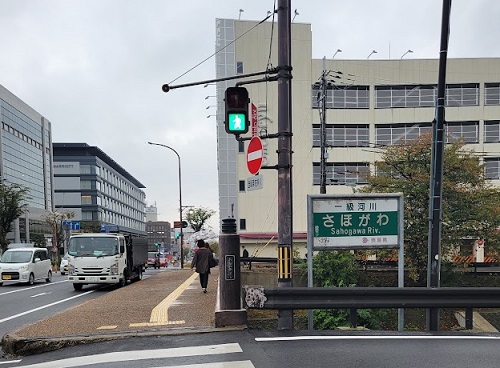
奈良市中心部の西側を流れる一級河川「佐保川」に沿って、近鉄「新大宮駅」から約2.5m余り、南へ歩いた。/ From Shin-omiya Station of Kingetu Railway we walked southward about 2.5 km along Sahogawa River.
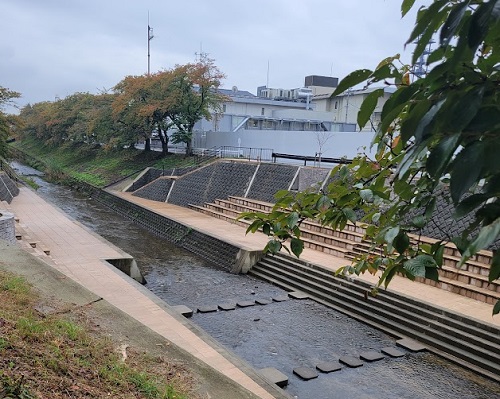
春には桜並木が見事だという佐保川。親水公園として整備されている。/ Sahogawa River is famouse ofr its cherry blossoms in spring. The banks are constructed well for people's enjoiment at the riverside.
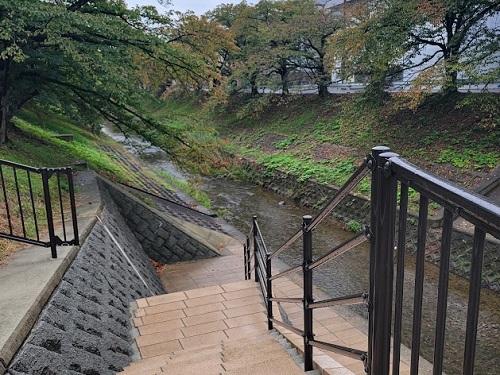
所々に川岸へ下りる階段が設置されている。/ Here and there, steps are going down to the water.
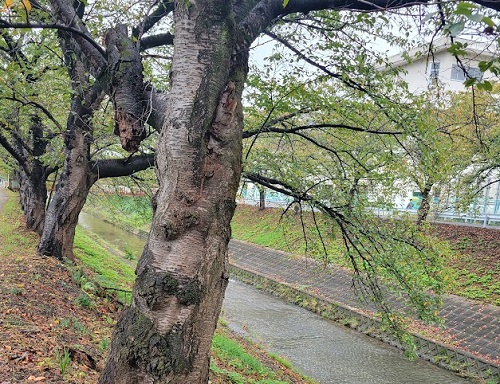
堤には桜並木が続く。/ Cherry trees are growing along the river.
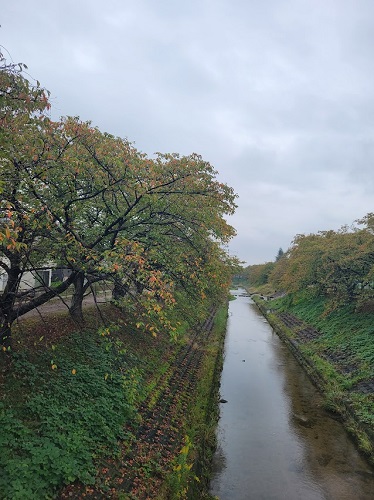
橋の上から見晴らす水路は、雨に煙って静かに南へ流れていく。/ The water is running southbound in foggy rain.
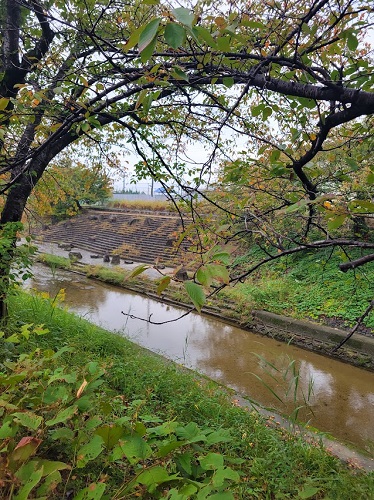
野趣に溢れた土手はお天気ならさぞ気持ちの良い散歩道だろう。/ The banks might be a good path for walkers on sunny days.
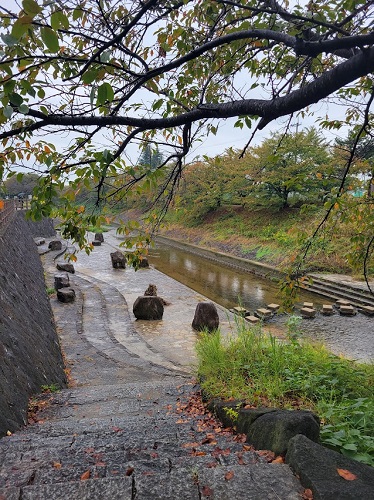
桜の葉も散り始めていた。/ The leaves of cherry trees were falling down.
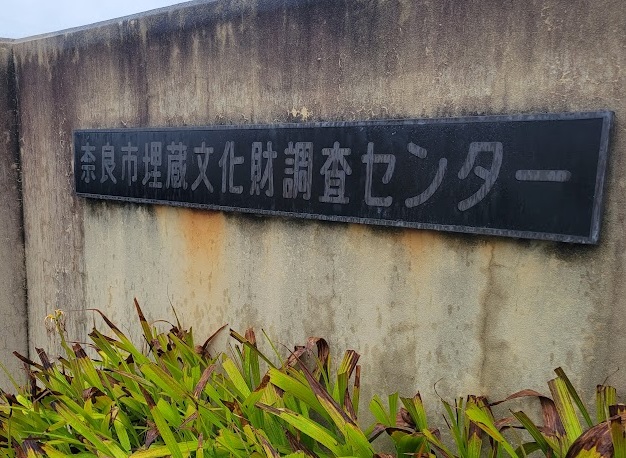
4~50分歩いた先に、「奈良市埋蔵文化財調査センター」はあった。目的は開催中の令和4年度 秋季特別展『また!ナニこれ?―奈良市出土の用途不明品―』。 月曜日の午前中とあって、他に見物人はほとんどいなかった。/ After walking for almost 50 minutes, we came to find The Research Center of Burried Cultural Property in Nara. We saw a special exhibition named "So What's It?" Thy were showing various kinds of property whose usage was unknown. Few visitors were there.
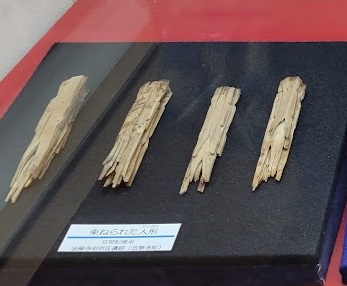
まず目を引いたのが、「束ねられた(男性の?)人形」(平安時代)。/ Figures of Men bound together.
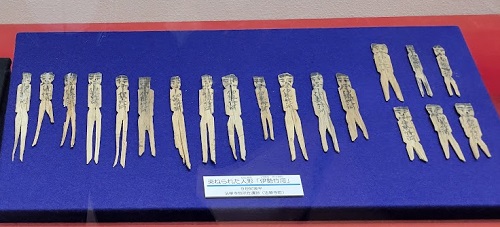
左写真の「束がほどけた人形」。全てに「伊勢竹河」と書かれているようだ。全部で51枚出土。/ Unbound figures. There were 51pieces discovered. Chinese characters are written on all of the wooden figures.
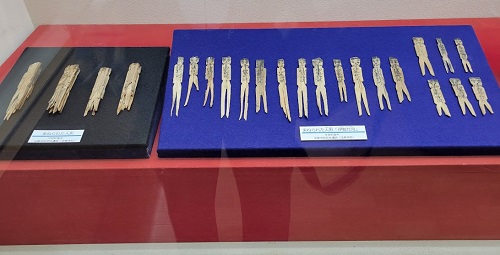
上記両者が並んだところ。/ Bound figures (left) and unbound ones (right)
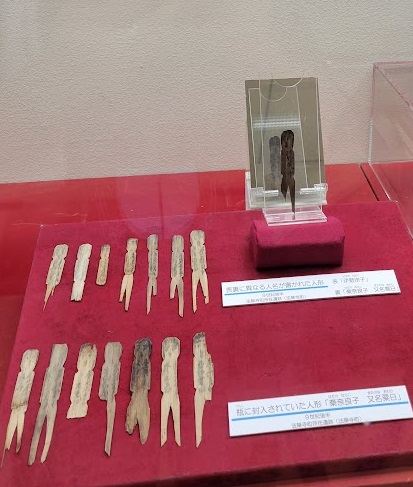
人形。右上: 表裏に異なる名前が書かれた人形。/ On both sides, different charactes are witten. (The right standing figure shows both sides.)
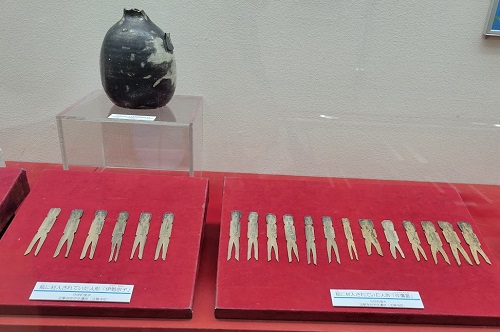
緑釉陶器の壺とその中に封入されていた(女性の?)人形(平安時代)/ These figures of women were put inside of the vase.
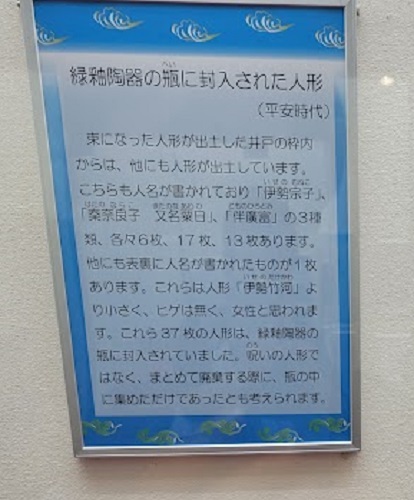
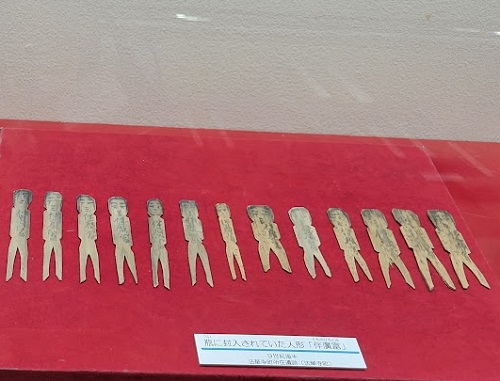
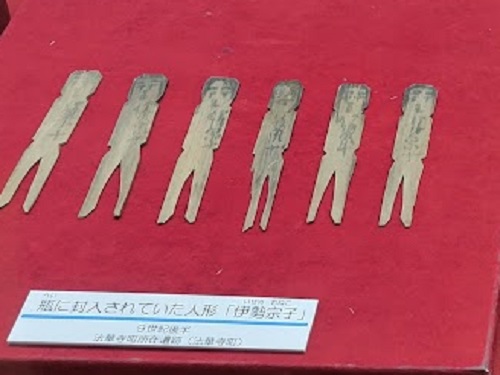
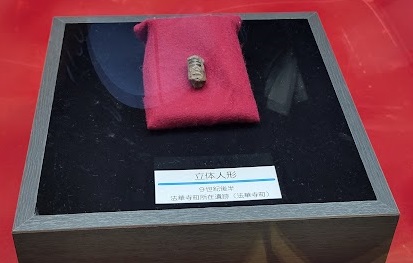
「立体人形」/ A cubic figure, not flat.
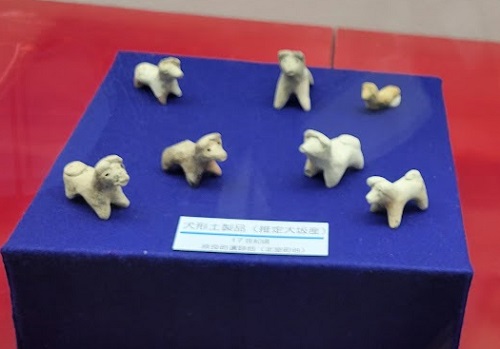
ミニチュア土器に封入された犬形土製品(安土桃山時代)/ Clay dogs kept in a miniature pot.
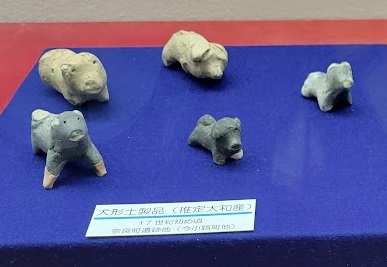
犬形土製品 (火葬墓の中から見つかった副葬品)/ Clay dogs found in graves; burial accessories?
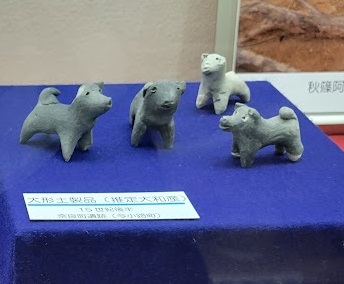
犬形土製品(亡くなった子どもが生前に大事にしていた玩具か?)/ Toy dogs of children who died young?
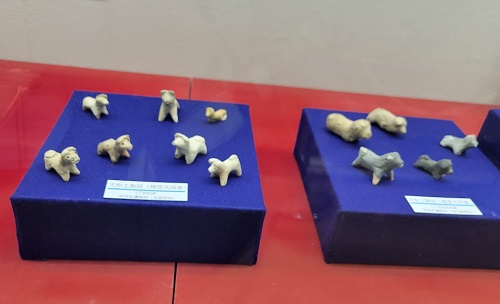
犬形土製品 (どの犬も愛嬌のある顔をしている)/ Dogs look lovely.
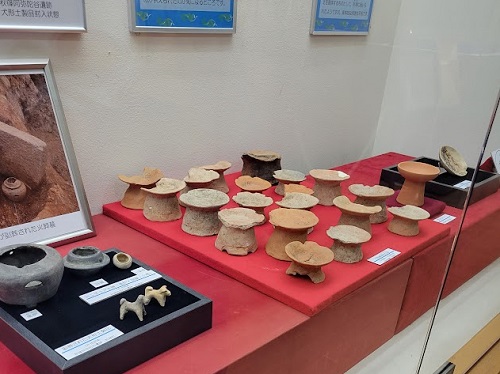
副葬品(左)と土師器高台付皿―祭事に使う土器?(室町時代)/ Burrial ccessories and clay vessels for religious festivals?
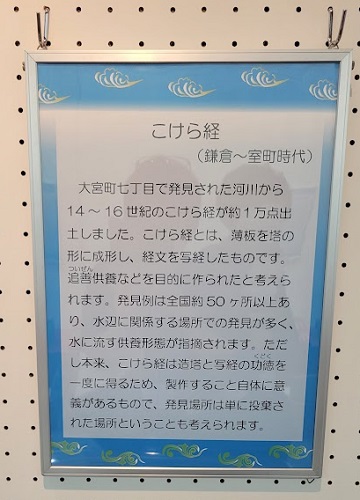
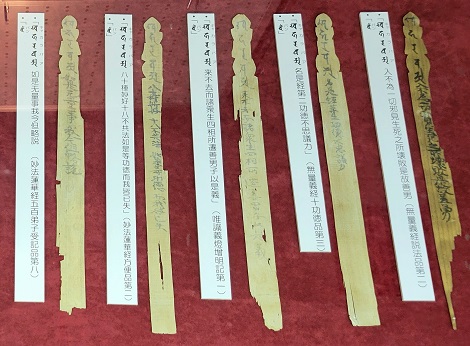
こけら経(鎌倉14C~室町時代17C)/ Kokera-kou (14 to 17 C?) scriputure
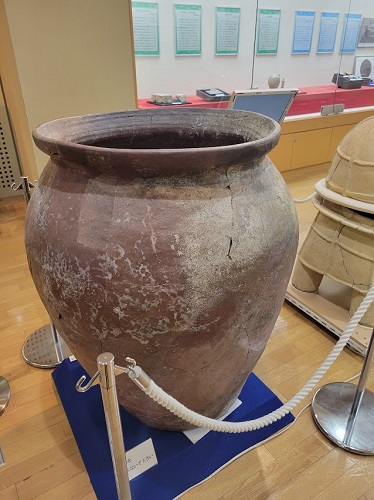
「三入」のヘラ書きがある備前産陶器甕(室町時代)/ A Bizen Pottery vase
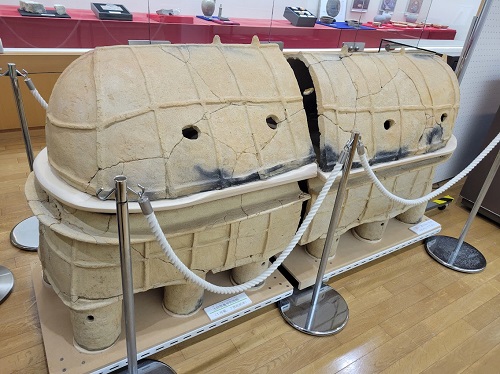
蓋に突起が付いた亀甲形陶棺(飛鳥時代)/ A pottery coffin
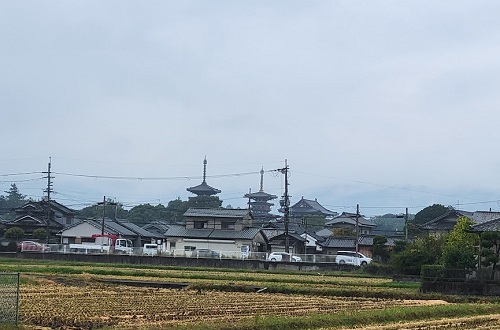
「奈良市埋蔵文化財調査センター」から西に向かって2km余り、雨の中を歩いていると、畑の向こうに塔が見えてきた。/ From the Center we walked about 2km westbound in rain, and found two five-story towers in a distance.
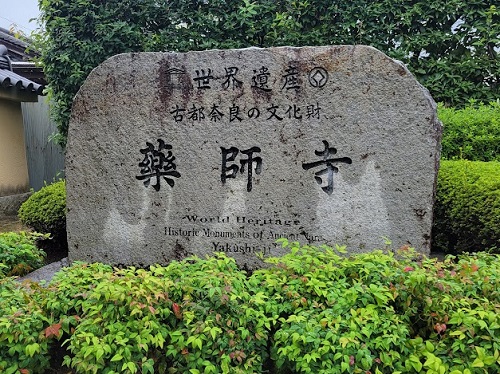
藥師寺に到着。ここも「世界遺産」だ!/ We came to Yakushi-ji Temple. a world heritage
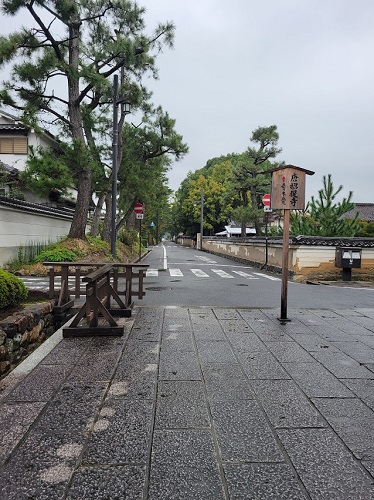
藥師寺の山門に続く道 / A road to the entrance into Yakushi-ji Temple
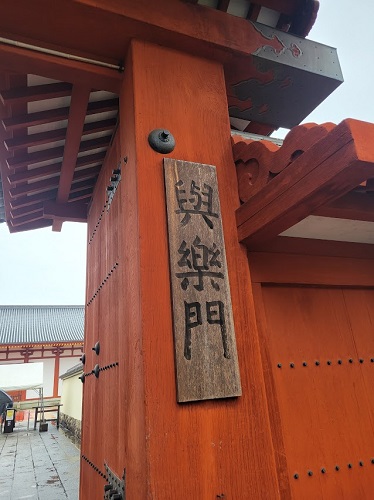
「與樂門」―ここから入って拝観受付へ。/ "Yoraku-Mon Gate"
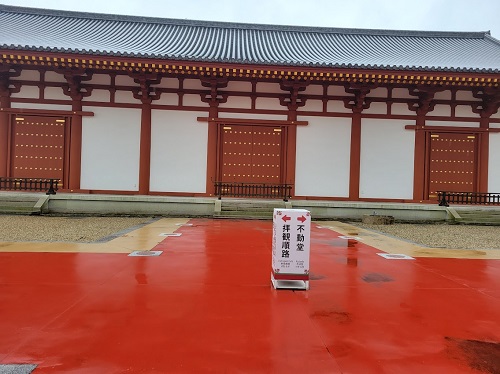
「食堂(じきどう)」/ The Dining Hall.
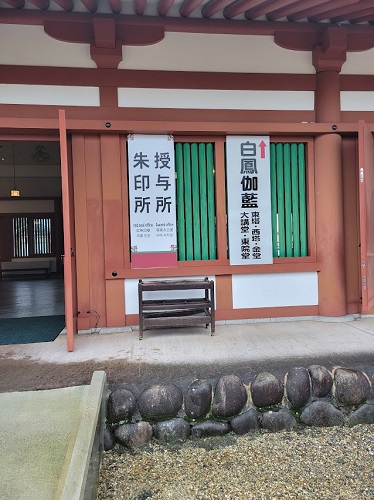
雨の月曜日効果(?)でこの名刹もたいへん空いていた。/ A way into Hakuhou Monastery includes East Tower West Tower, Kon-do (main hall), the Grand Lecture Hall, and Touin-do.
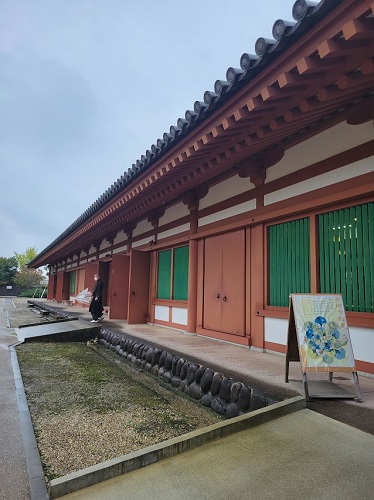
人影のあるあたりが食堂への入り口(土産物・記念品などを販売している。)ここを通過して白鳳伽藍へと至る。/ The entrance into the Dining Hall.
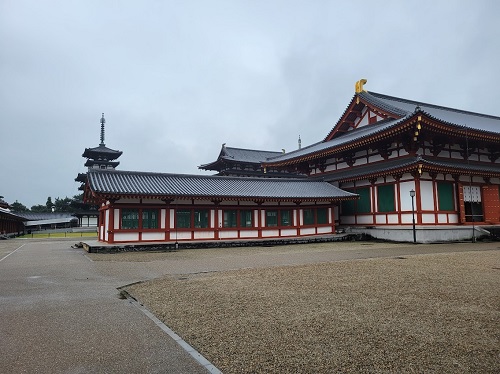
手前は「大講堂」。奥に「東塔」が見える。/ Grand Lecture Hall (right) and East Tower (left)
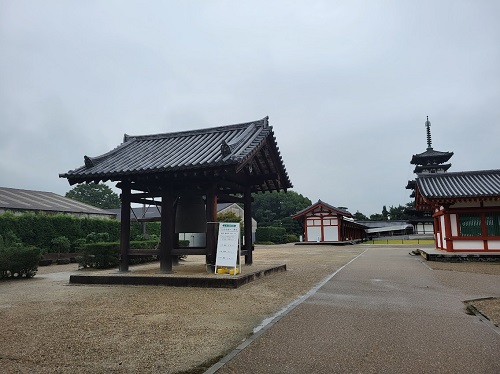
「鐘楼」/ Bell tower
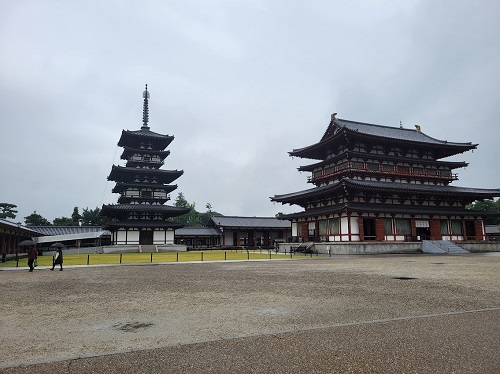
「東塔」と「金堂」/ East Tower and Kon-do (the main hall)
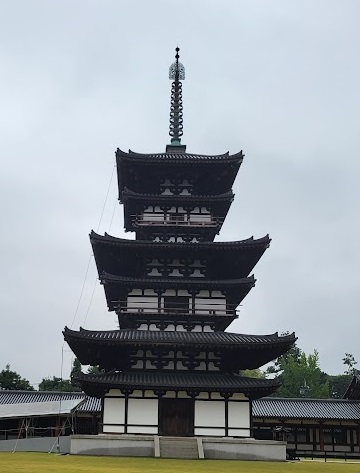
「東塔」/ East Tower
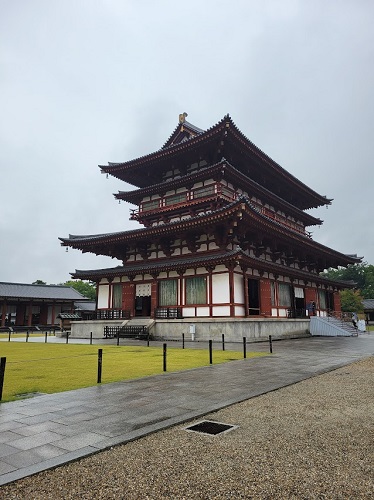
「金堂」/ Kon-do Hall
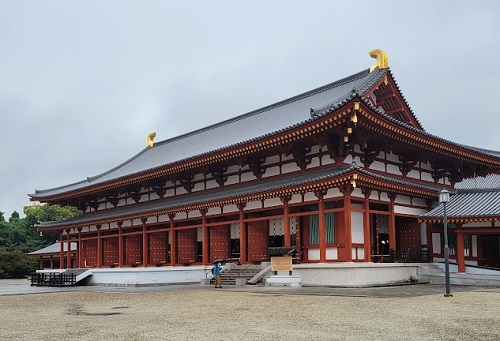
「大講堂」 / Grand Lecture Hall
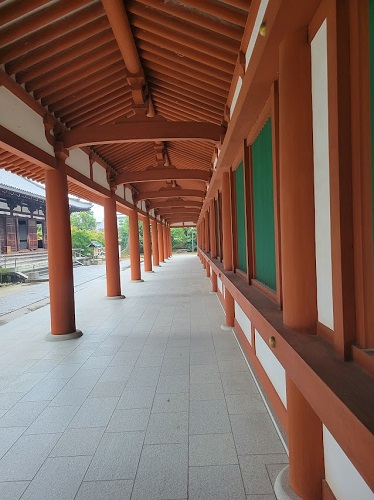
「東院堂」へ至る東回廊 / the East Cloister
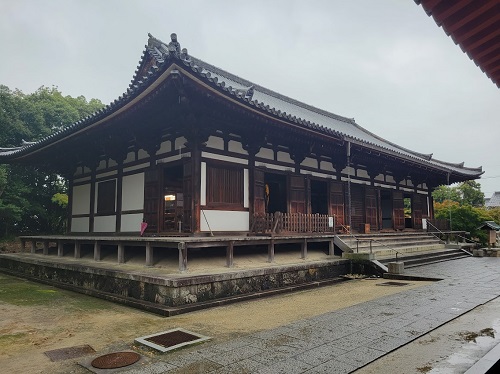
「東院堂」国宝・鎌倉時代―日本最古の禅堂 / Touin-do (a national treasure, the oldest Zen Hall.)
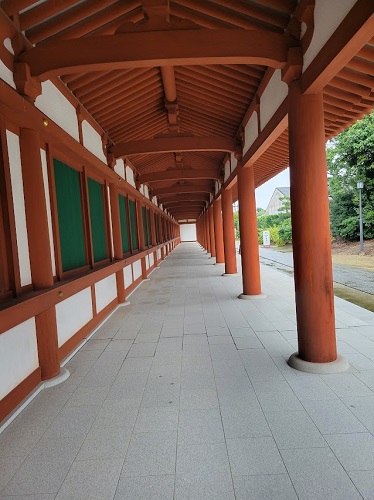
「東院堂」へ至る東回廊/ the East Cloister
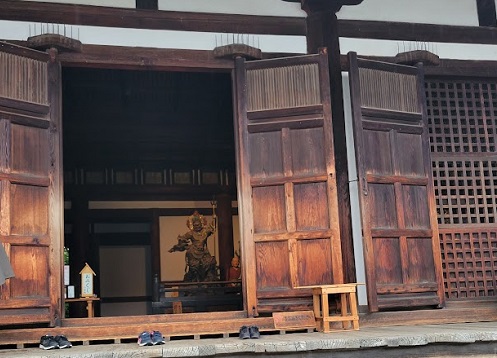
「東院堂」に安置される「聖観世音菩薩立像」を取り囲む四天王像の一部が見える。/ Touin-Do (One of the Buddhist statues can be seen.)
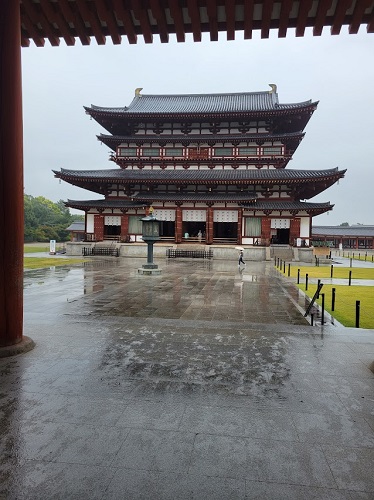
「金堂」の正面。激しく雨が降っていた。/ The facade of Kon-Do. It was raining hard.
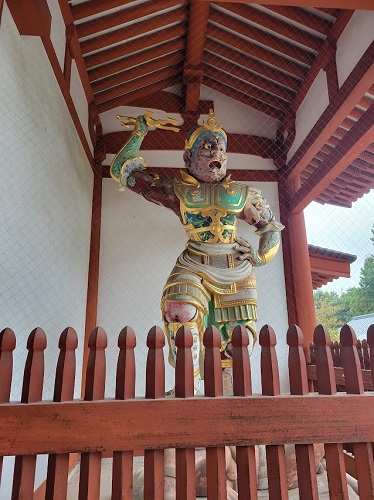
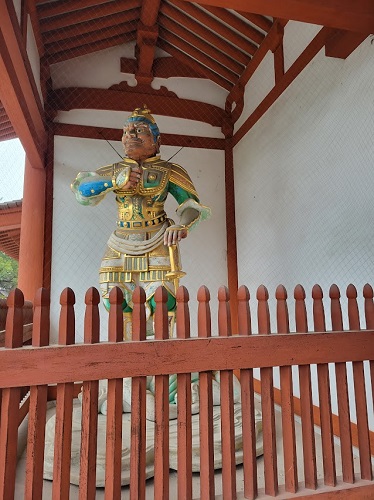
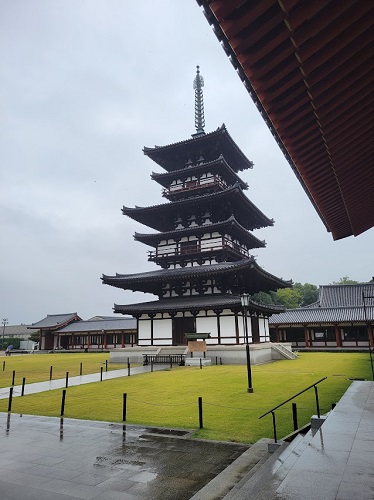
「東塔」天平2年(730年)建立―2020年までに解体修理が行われた。/ East Tower (It was originally built in 730, and was takn apart and repaired by 2020.)
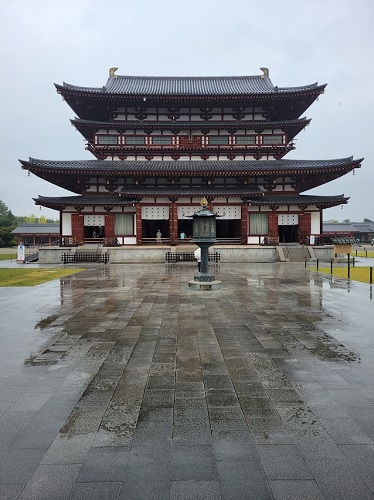
「金堂」復興が行われ1976年に落慶。/ Kon-Do. It was repaired and completed in 1976.
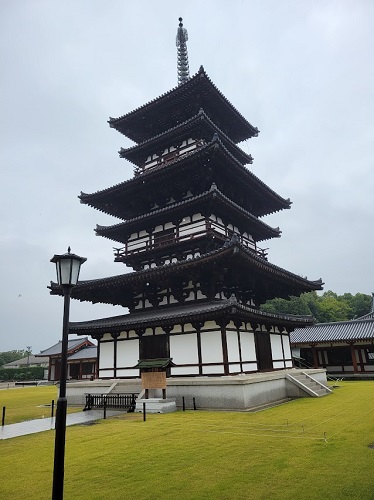
「東塔」―〈凍れる音楽〉と評されている / East Tower, praised as "the frozn music."
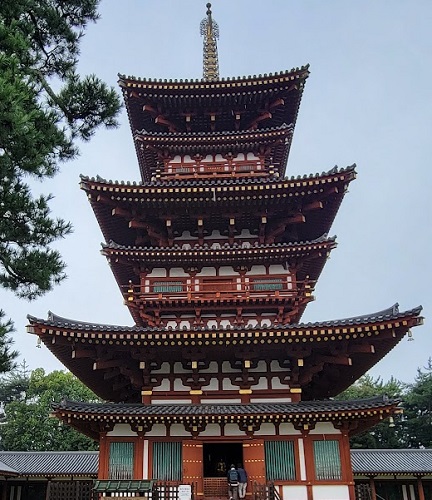
{西塔」(1528年に焼失し1981年に復興)―軒下に裳階(もこし)を付けた三重塔 / West Tower (It was burnt down in 1528 and was rebuilt in 1981.) It is a three-story tower with Mokoshi-the roof like structure between roofs.
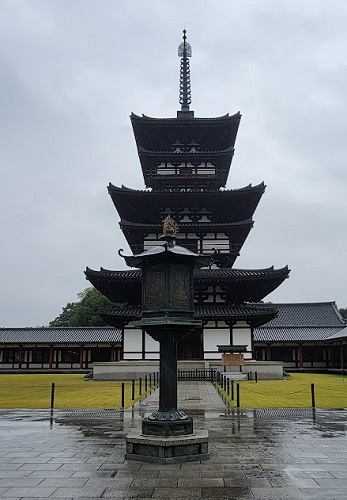
「東塔」/ East Tower
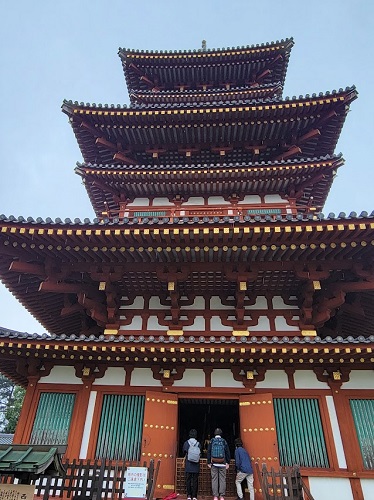
{西塔」/ West Tower
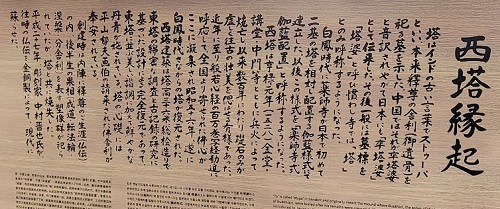
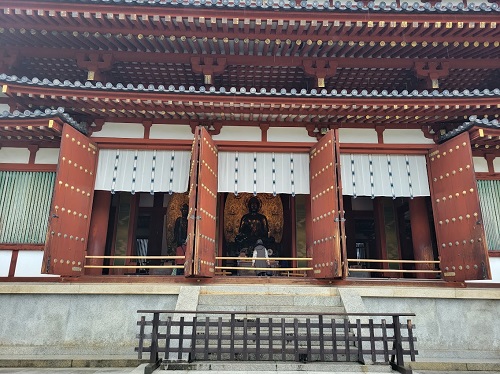
「金堂」<薬師三尊像>を安置する / Kon-Do, the main hall.
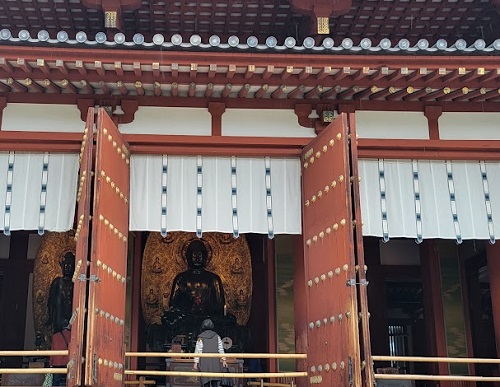
内部は撮影禁止ながら、外から<薬師三尊像>を垣間見る/ When you approach closer to the Hall, you can have a glimpse at the three precious Buddhist Statues placed inside.
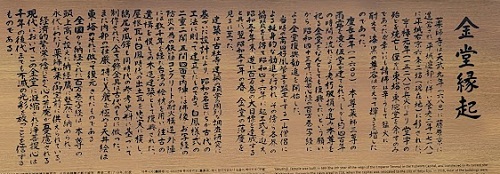
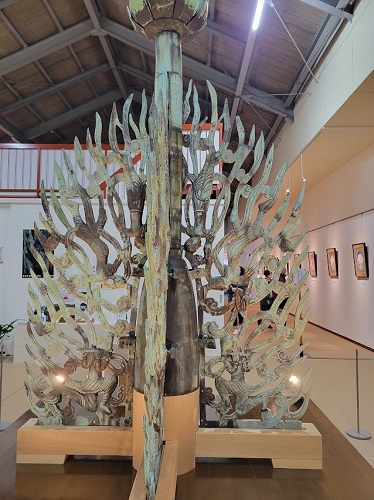
「大講堂」の中に展示される水煙/ The water fire exhibited in the Hall.
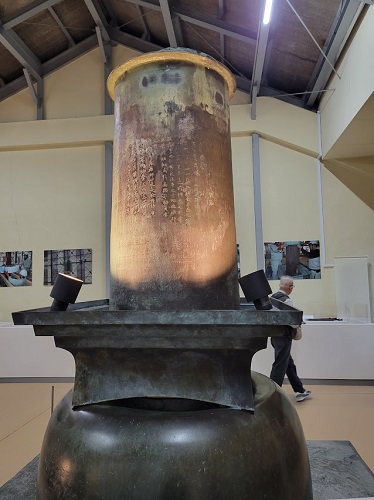
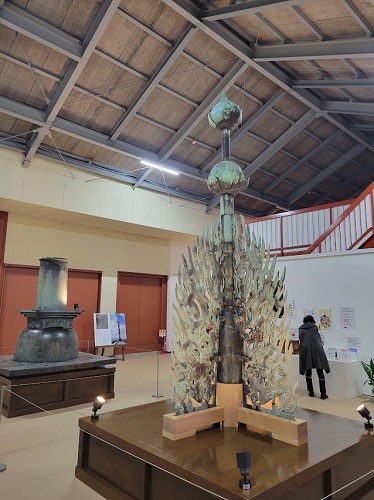
展示物 / Exhibitions
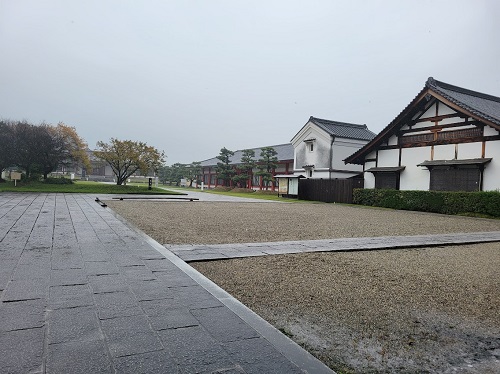
一旦「與樂門」を出て、筋向いにある「玄奘三蔵院伽藍」に向かう。右手には「藥師寺本坊お写経道場」等がある。/ Out of Yoraku-mon Gate, we went into Gensou-Sannzouinn Monastery. There you can find a Shakyou-doujyou (a hall for copying Buddhist sutras) on the right side..
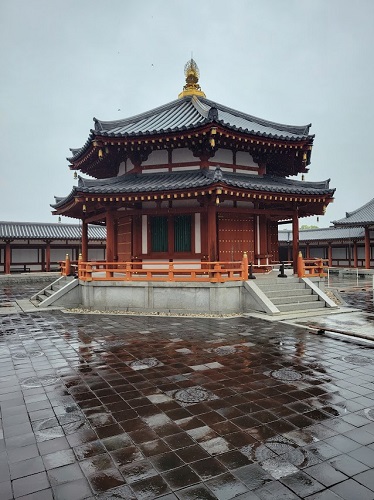
「玄奘塔」/ Gensou-tou tower
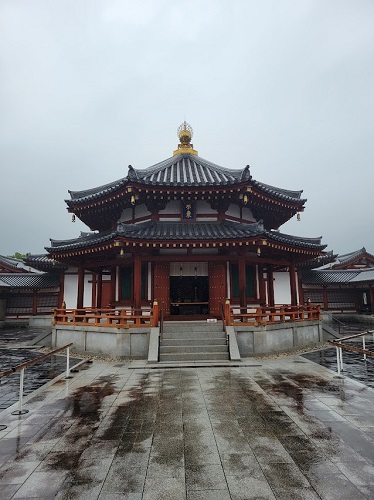
「玄奘塔」正面―この背後に「大唐西域壁画殿」があり、平山郁夫画伯による大唐西域(シルクロー)ド壁画がある。/ The facade of Gensou-tou tower, beyond which is a hall where you can see mural paintings of "The Silk Road" drawn by Hirayama Ikuo.
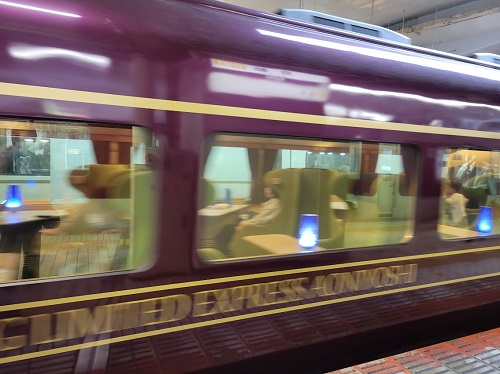
雨の藥師寺拝観を済ませ、近鉄橿原線「西ノ京駅」から「大和西大寺駅」を経て近鉄奈良線「新大宮駅」に戻り、ホテルで荷物を受け取って再び「新大宮駅」から「奈良」へ。/ We came back to Nara Railway Station.
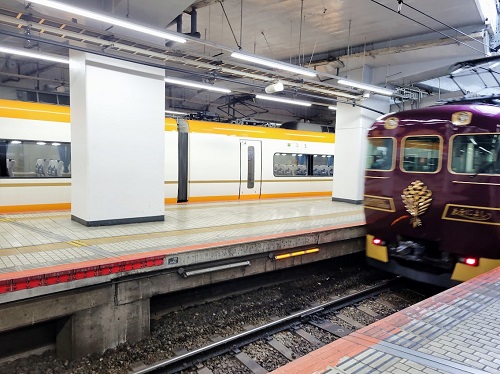
近鉄「奈良駅」では展望・食堂車両付き特急「あおによし号」が丁度発車するところだった。列車を見送って、京都へ向かう。京都から東海道新幹線で東京・品川を目指し、この度の「奈良旅」は幕を閉じた。/ Just a glimplse of Aoniyoshi, a special limited express providing dining service for passengers. This is the end of our trip in Nara.
To Home / To Gallery / To the Latest Note / Top of this page
Day 1: Saturday, October 15, 2022
Day 2: Sunday, October 16, 2022 / From Wakakusa-yama to Nara Machi